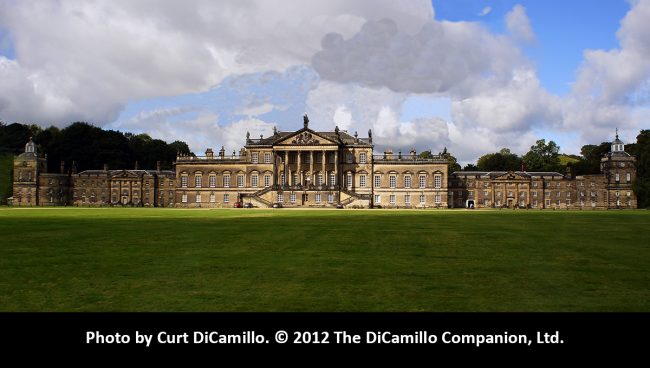
The entrance (east) facade
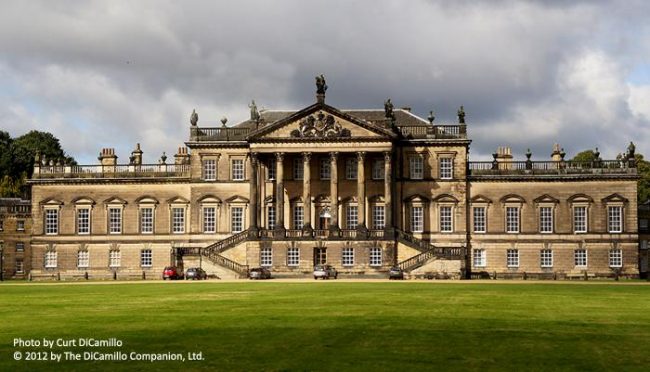
Detail of the entrance (east) facade
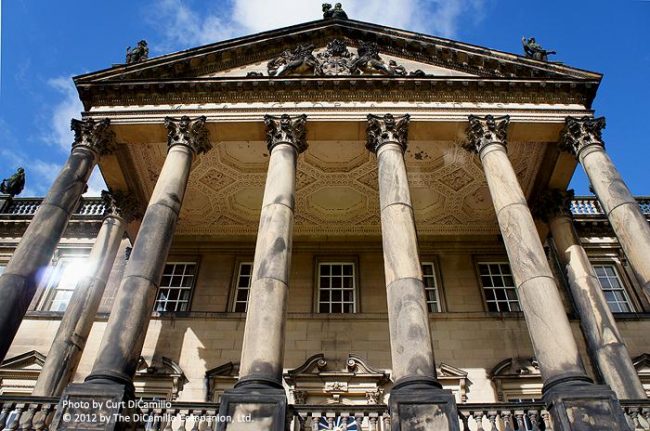
The portico on entrance facade
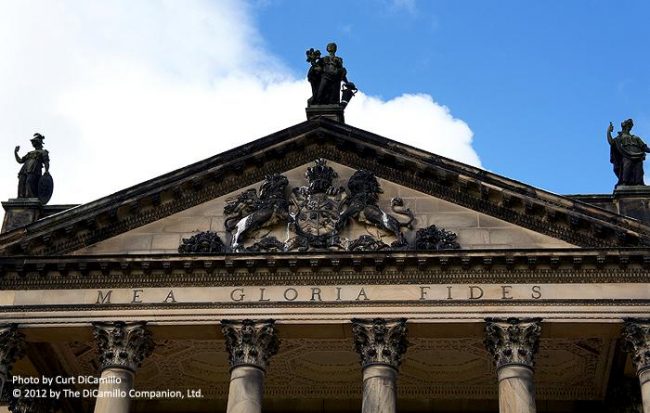
The pediment on the portico of the entrance facade
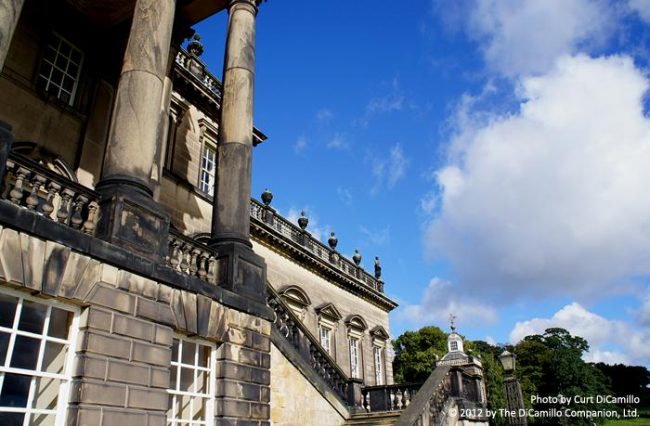
The right wing of the entrance facade
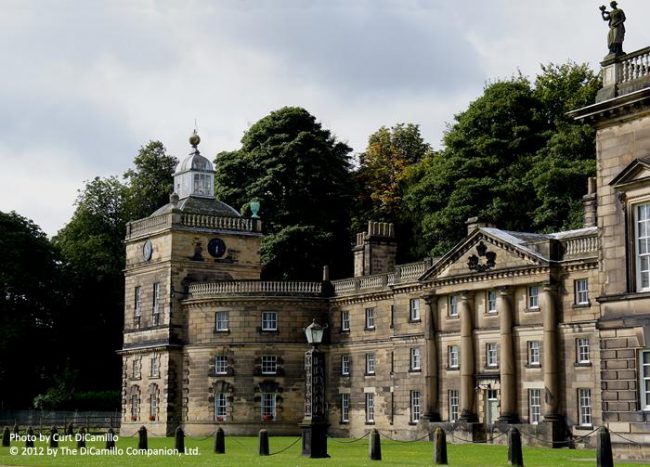
The left wing of the entrance facade
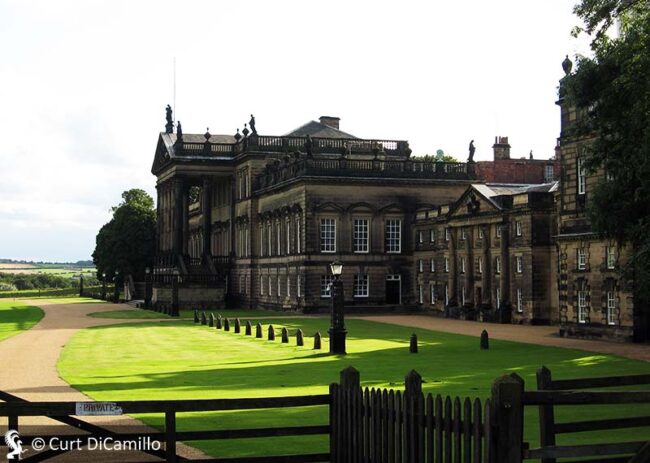
The Palladian Facade
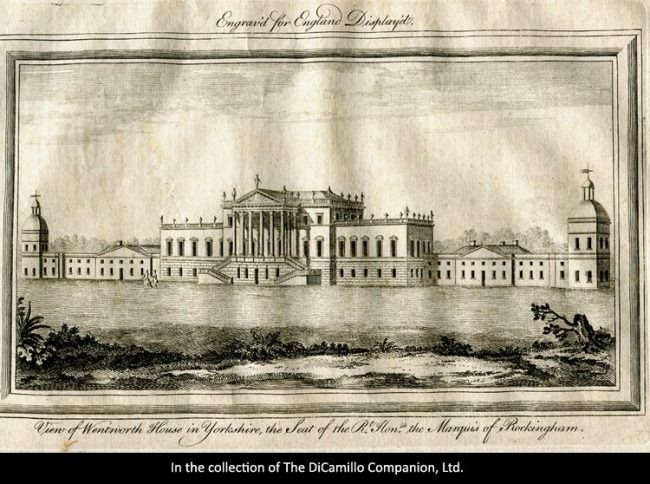
A 1769 engraving of the house from "England Display'd"
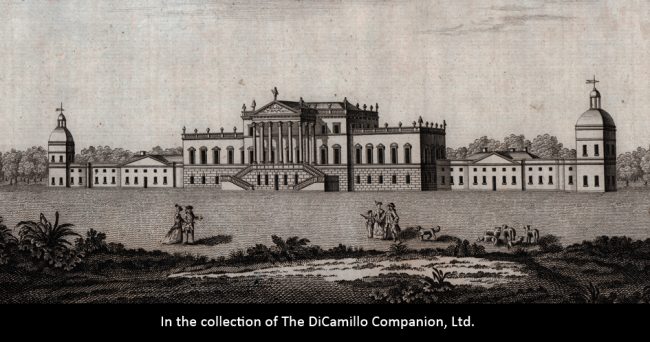
A 1779 engraving of the house from "The Modern Universal British Traveller"
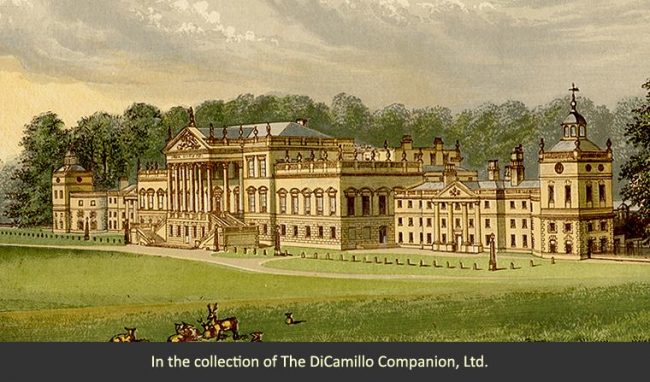
The entrance facade from the 1880s publication "Morris's Views of Seats"
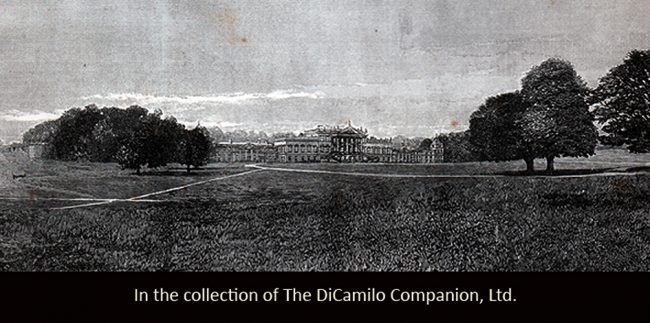
An illustration of the house from the Jun 27, 1891 issue of "The Illustrated London News" commemorating the visit of the Prince of Wales to WW.
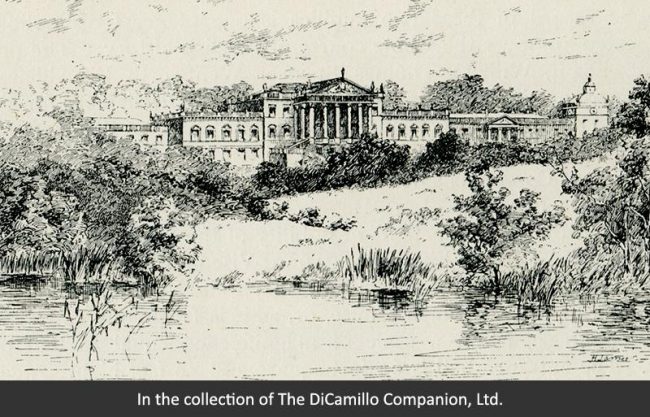
An 1899 lithograph of a pencil drawing of the house from the lake
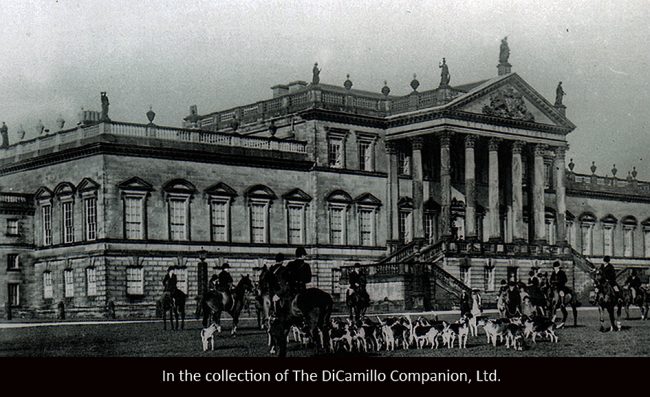
The hunt in front of the house from an early 20th century postcard
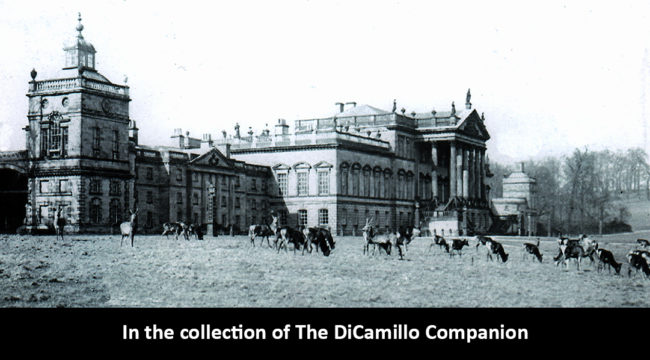
The entrance facade with deer and cattle from a circa 1904 postcard
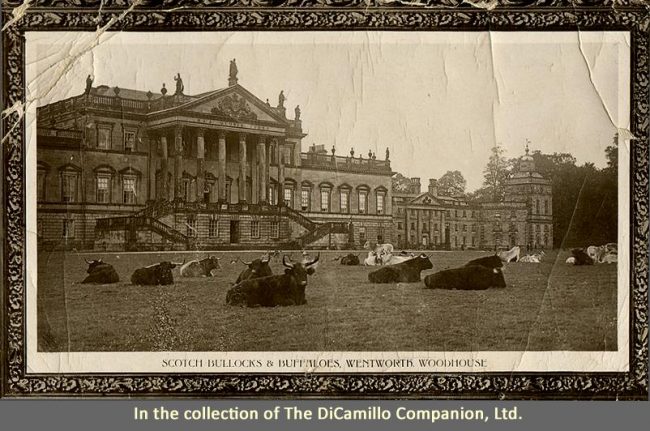
The entrance facade from a circa 1910 postcard
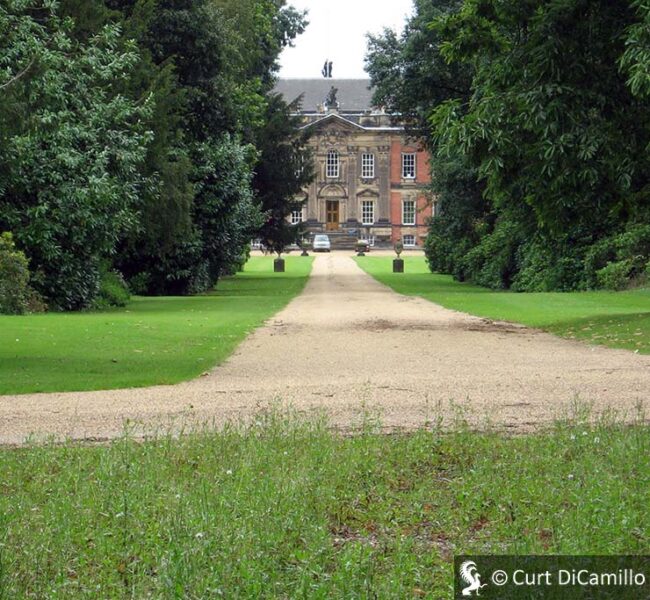
The Baroque Facade
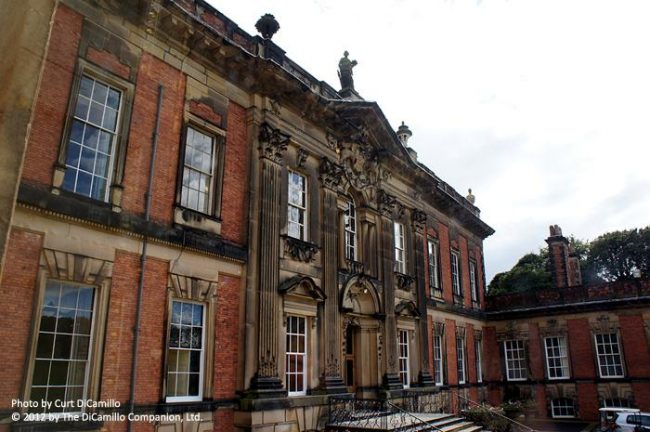
The Baroque Facade
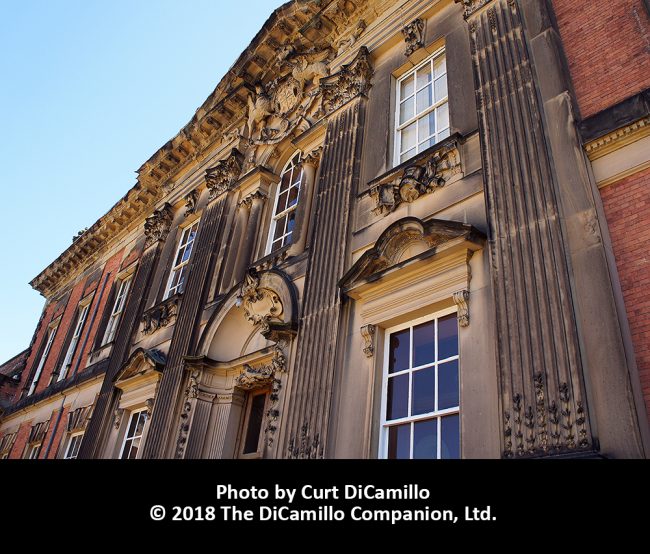
Detail of the Baroque Facade
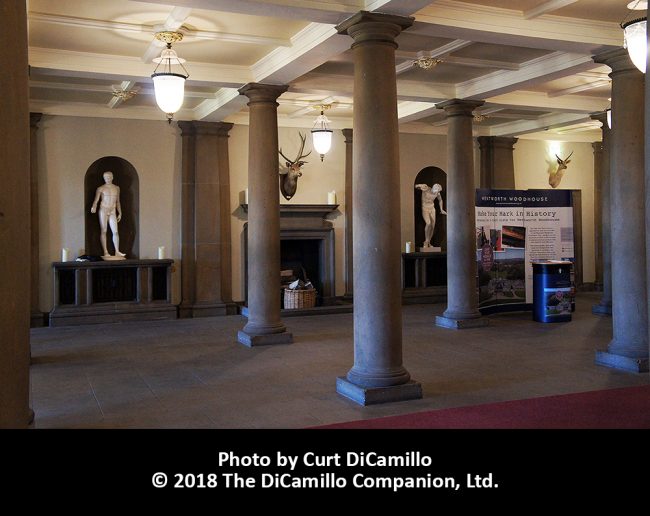
The entrance hall
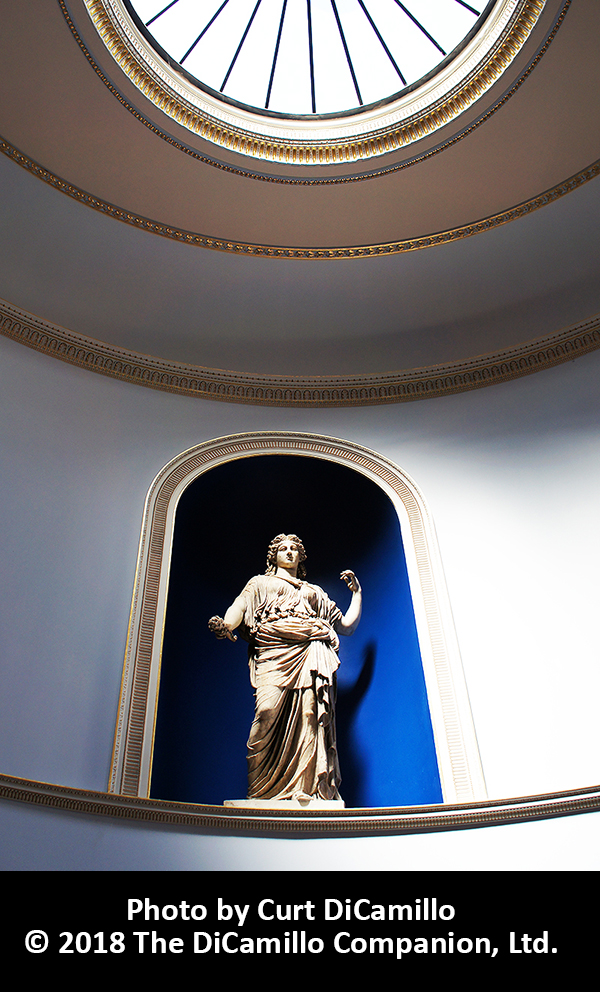
The stairwell
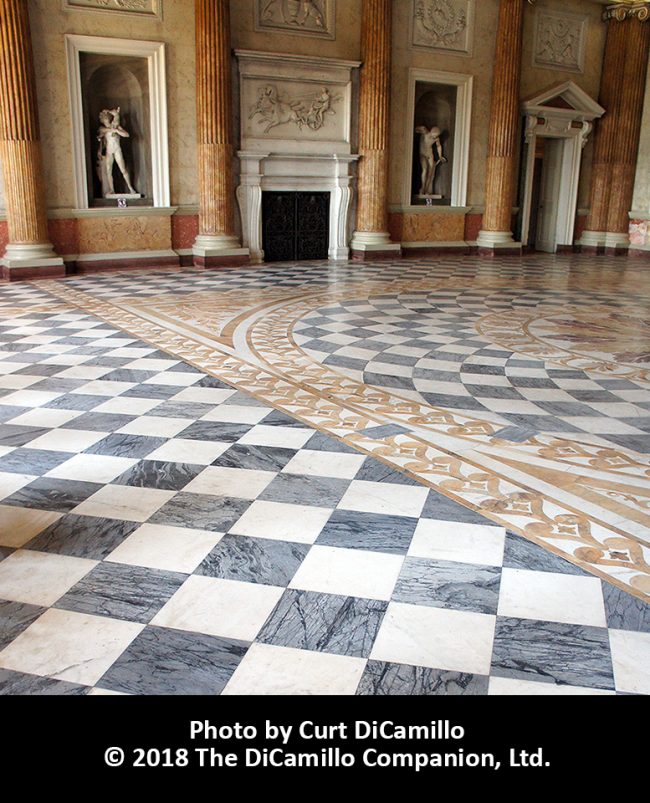
The marble hall
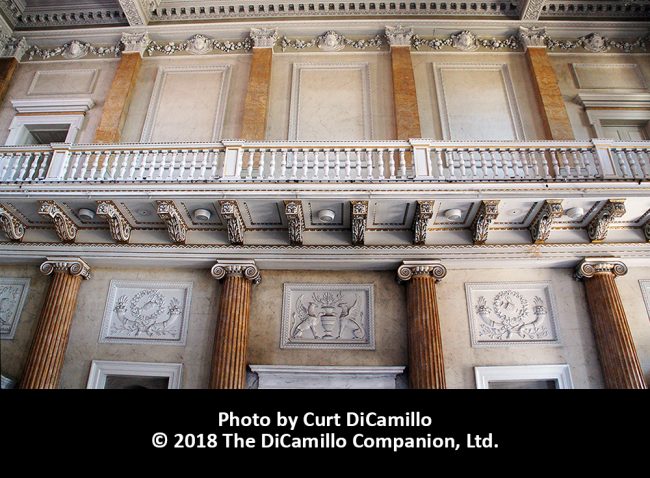
The marble hall
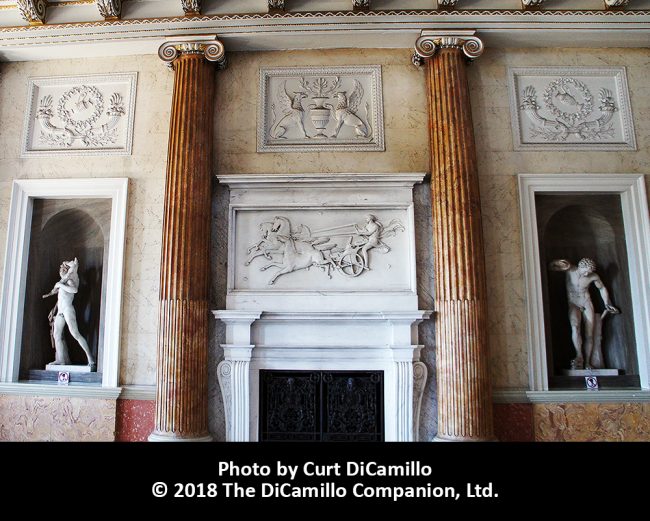
The marble hall
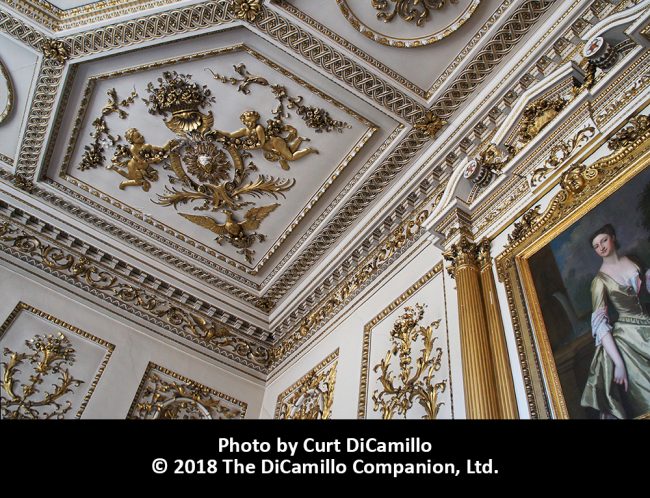
The Whistlejacket Room
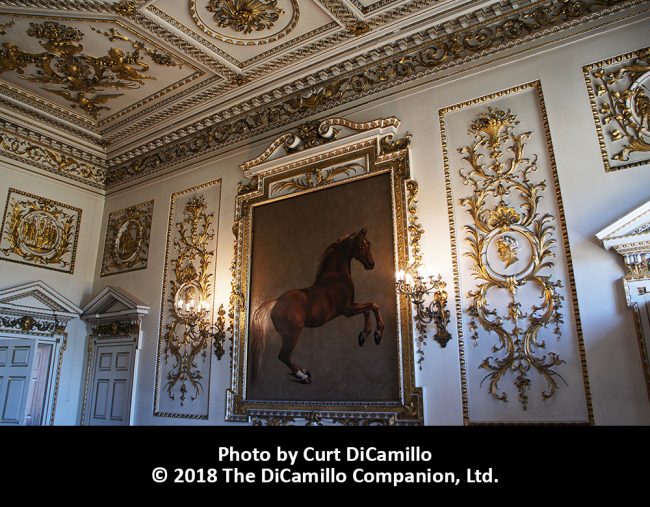
A copy of Whistlejacket in the Whistlejacket Room
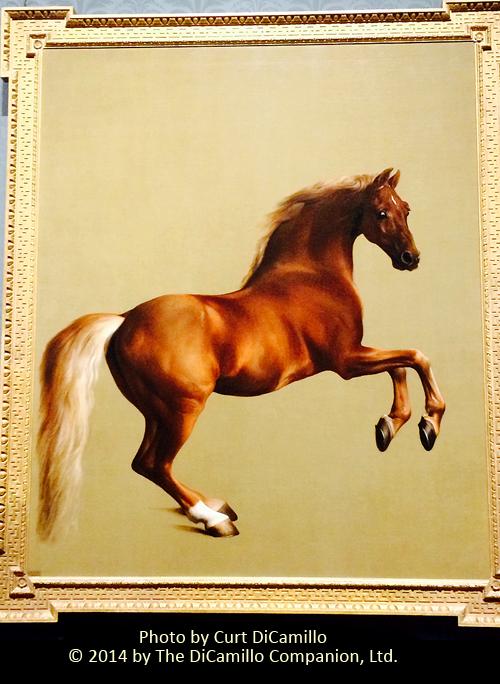
The famous Stubbs painting of Whistlejacket, formerly in the Whistlejacket Room at WW, today in the National Gallery, London.
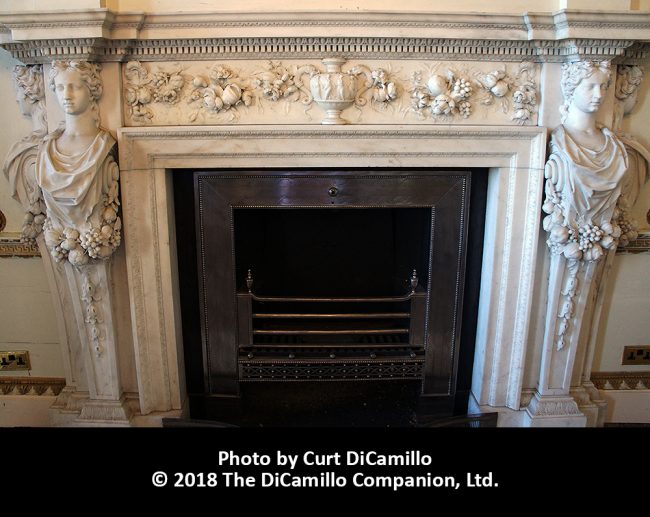
The van Dyck Room fireplace
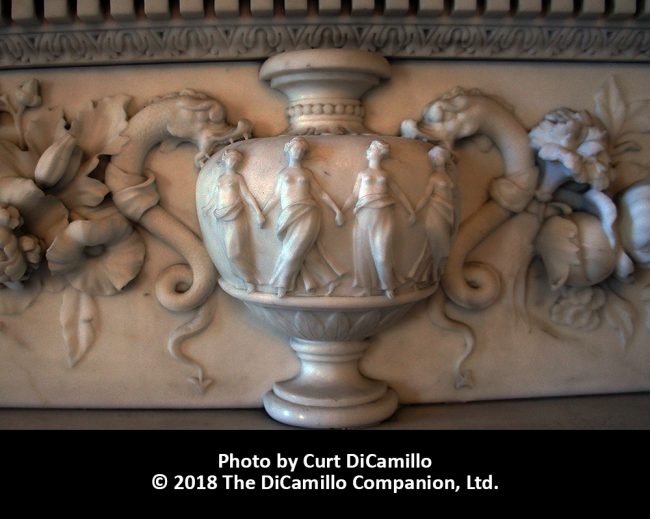
Detail of the van Dyck Room fireplace
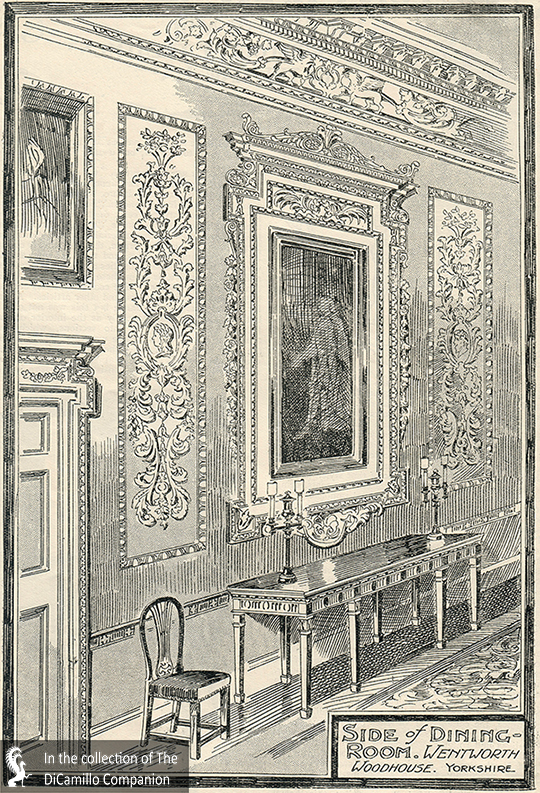
A drawing of a wall of the dining room from the Jun 1, 1912 issue of "The Cabinet Maker and Complete House Furnisher"
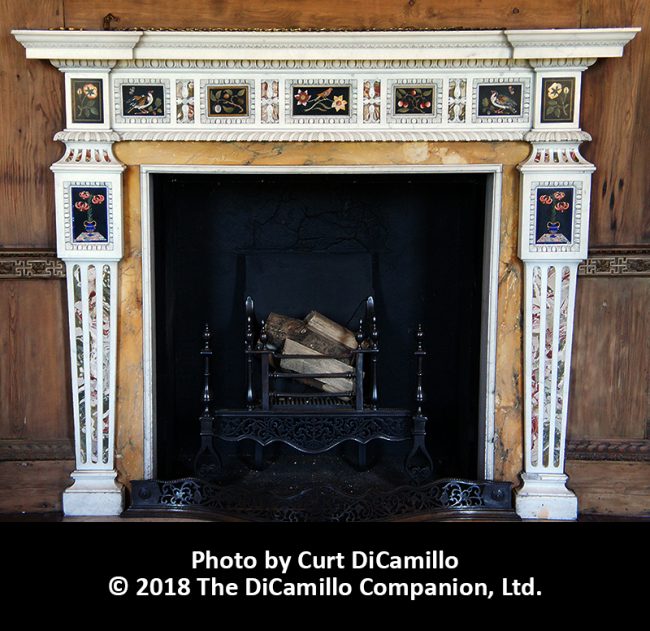
Fireplace
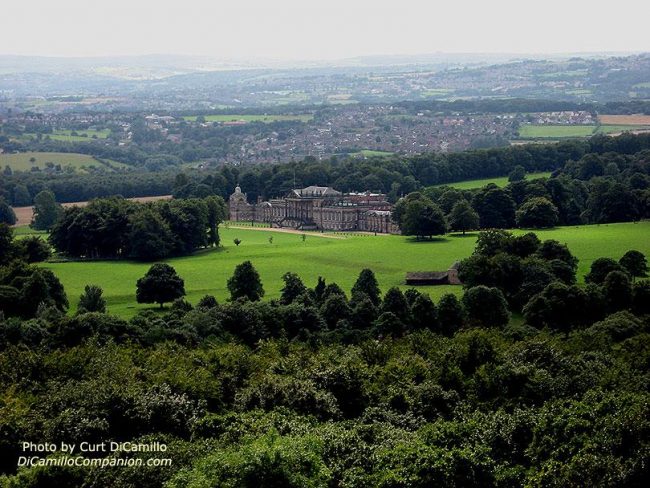
The house From Hoober Stand
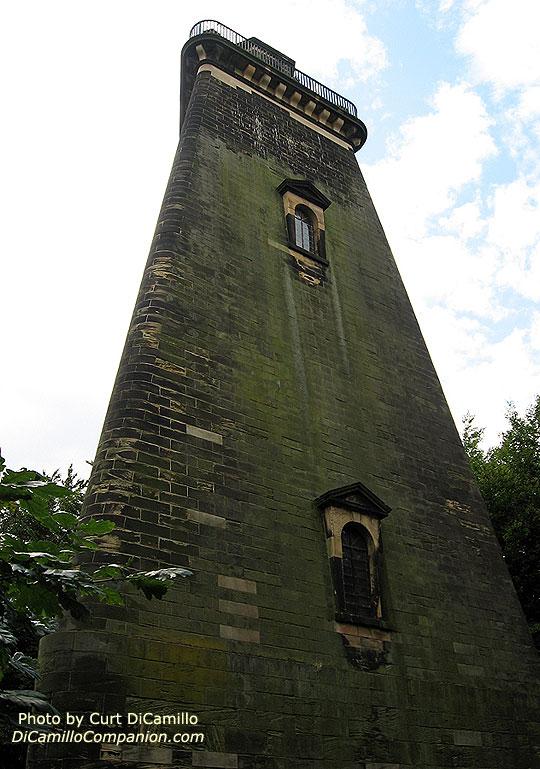
Hoober Stand
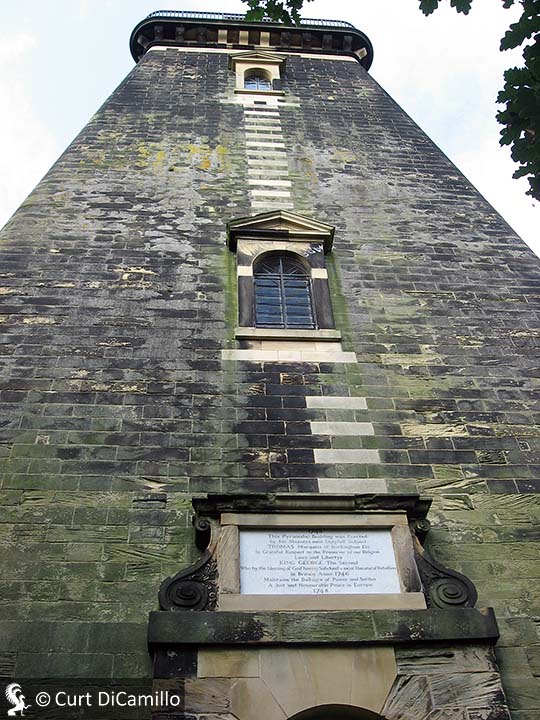
Hoober Stand
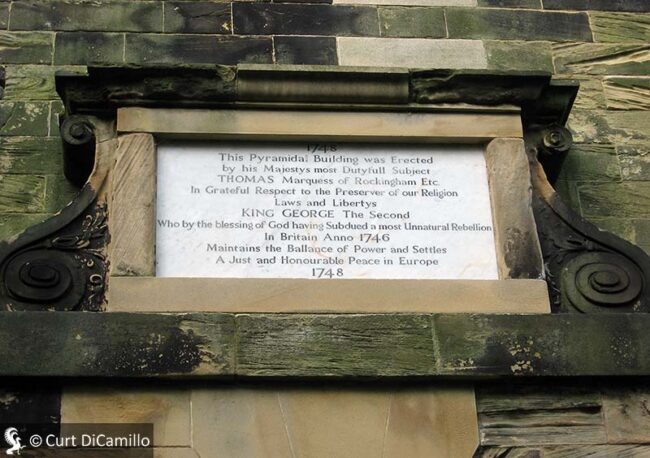
The inscription on Hoober Stand
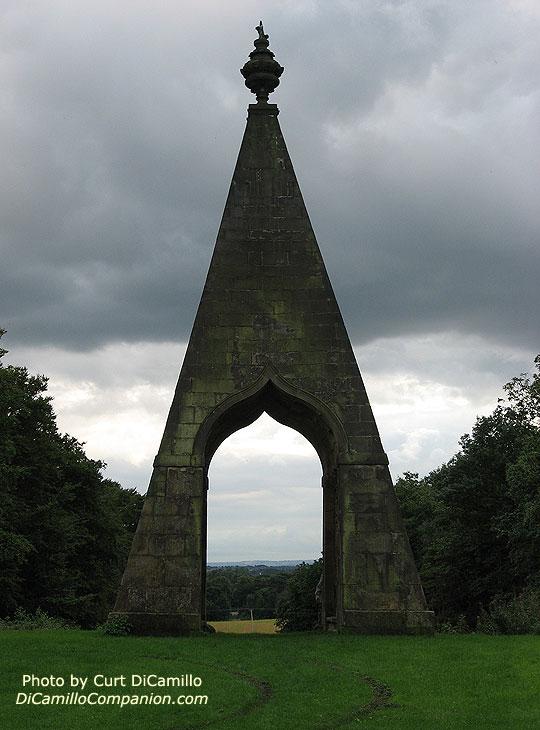
The needle's eye
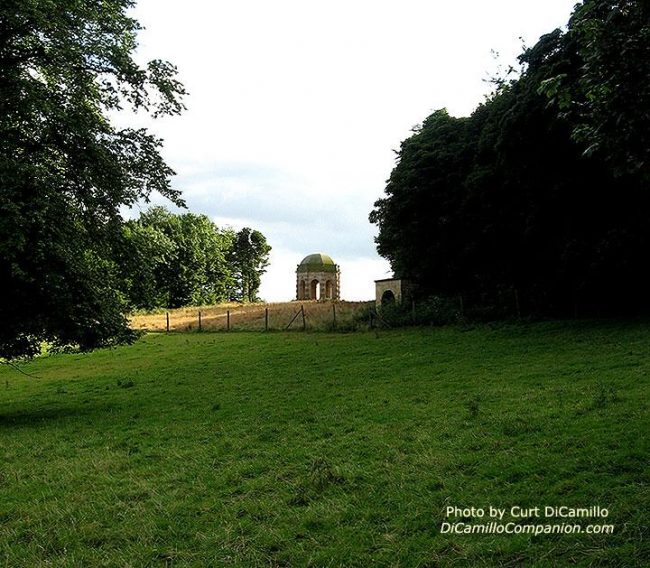
The Doric Temple
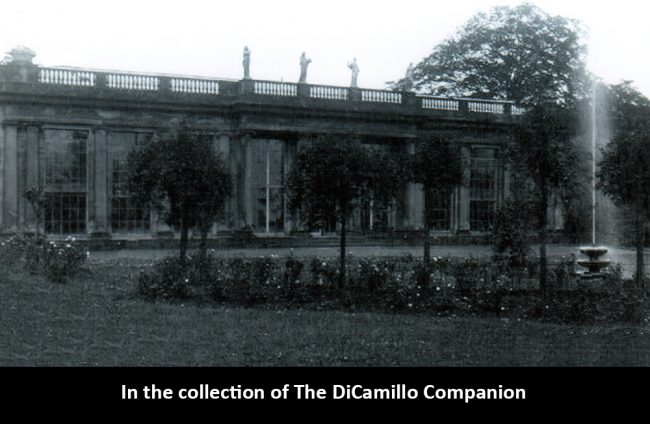
The camellia house from a circa 1904 postcard
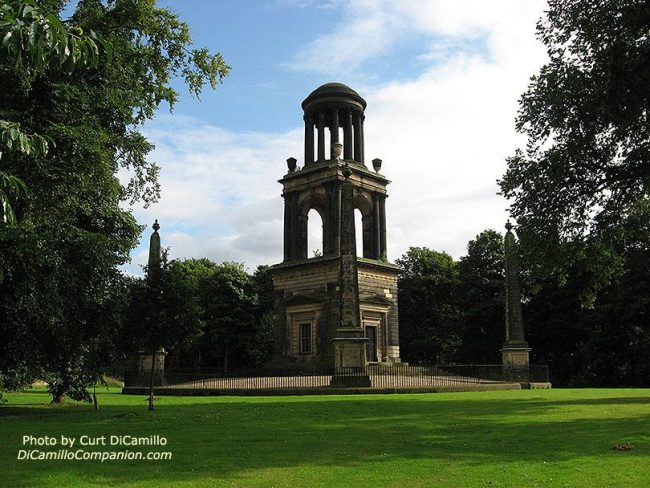
The Rockingham Monument
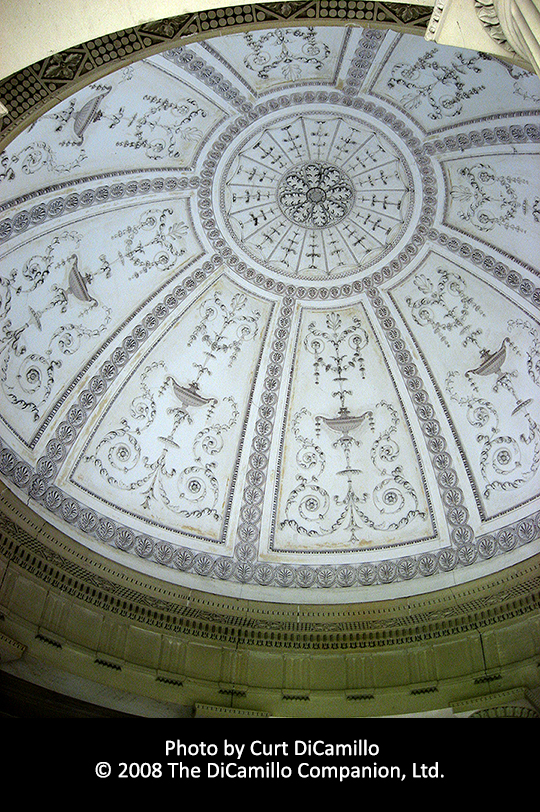
Interior dome of the Rockingham Monument
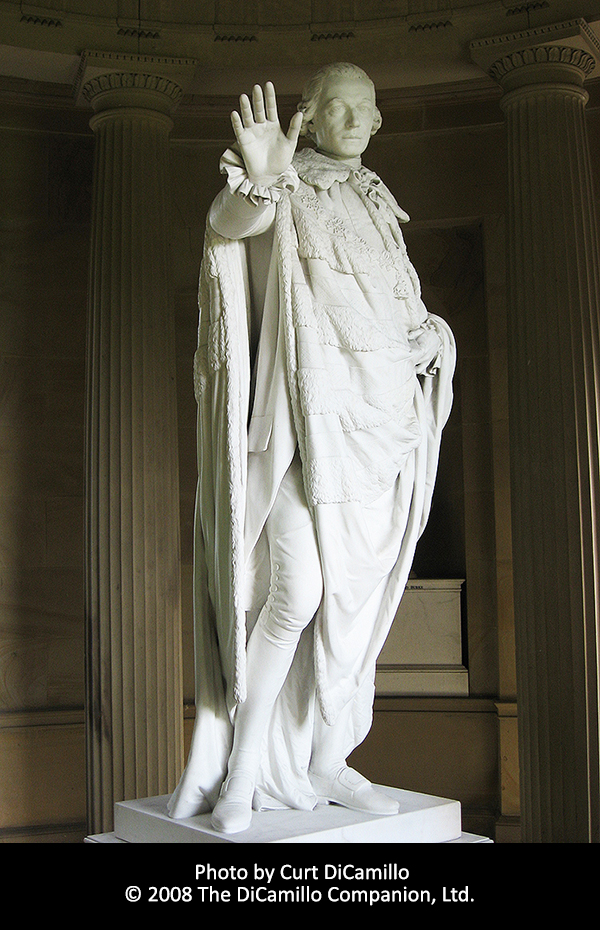
Nollekens's statue of the 2nd Marquess of Rockingham inside the Rockingham Monument
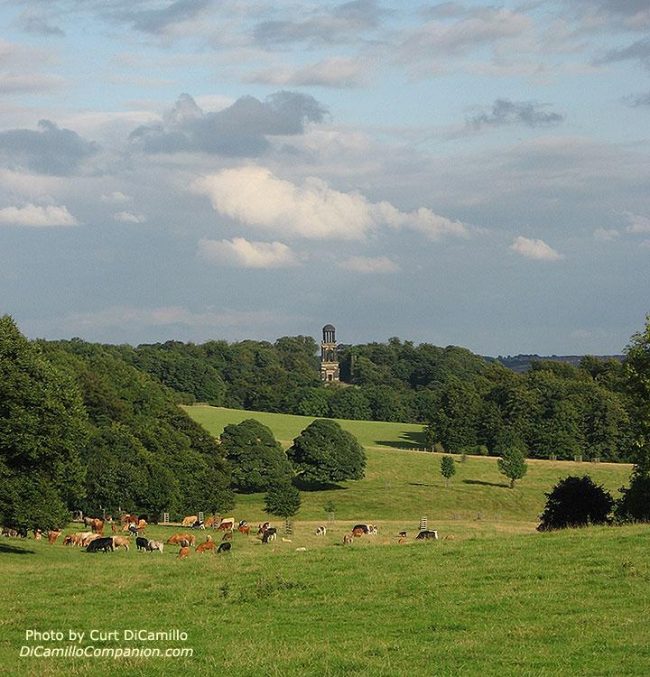
The Rockingham Monument from the front lawn of the house
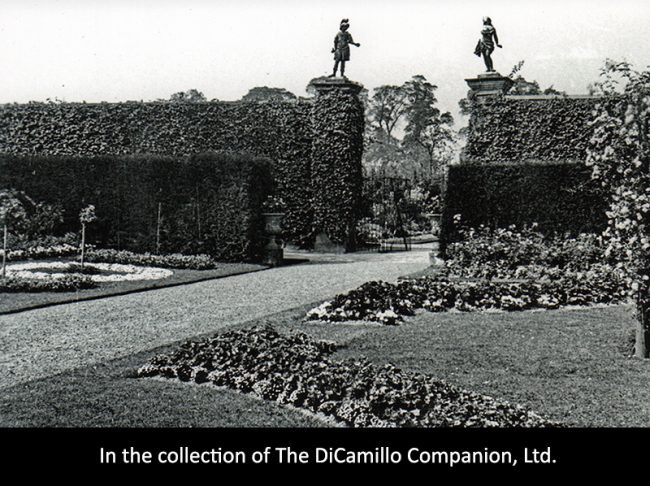
The back garden from an early 20th century postcard
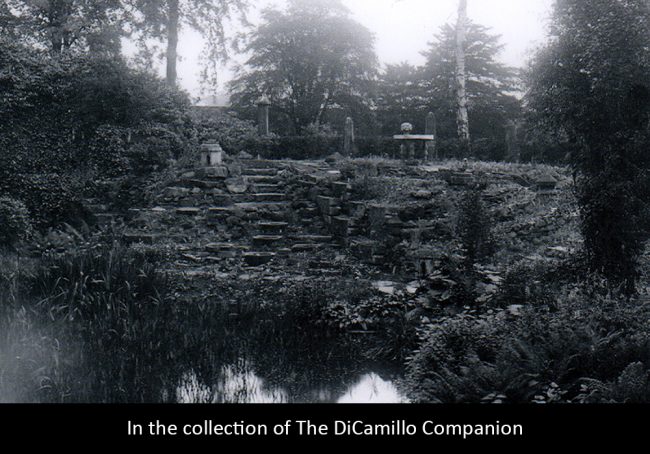
The Japanese Garden from a circa 1902 postcard
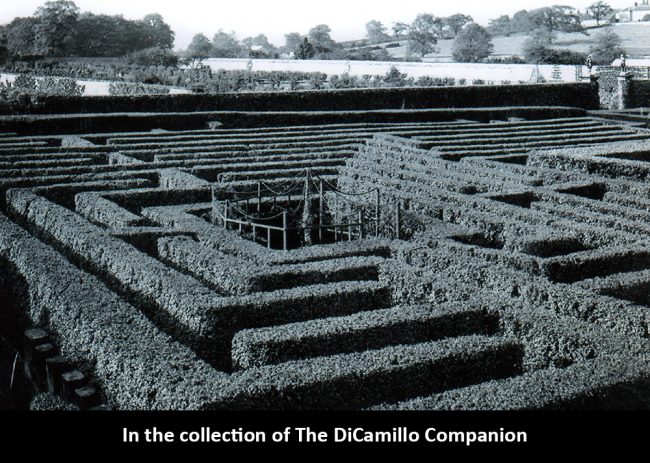
The maze from a circa 1907 postcard
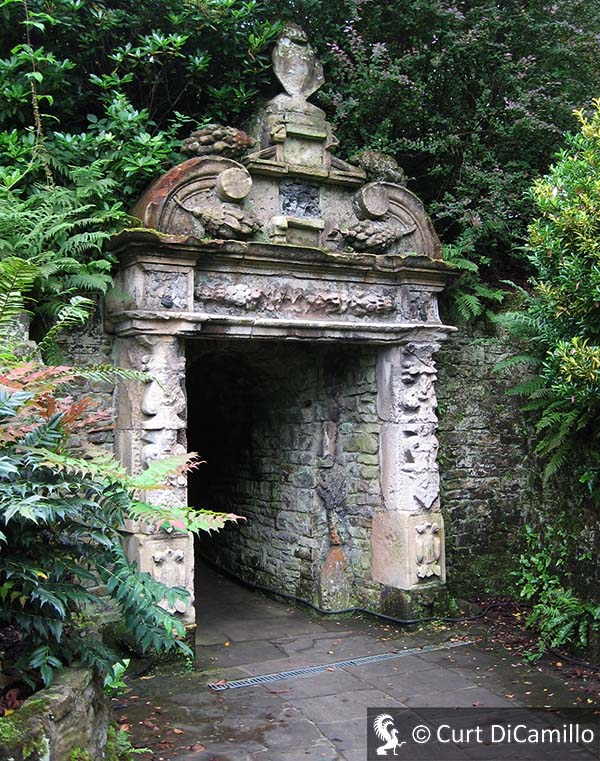
The bear pit
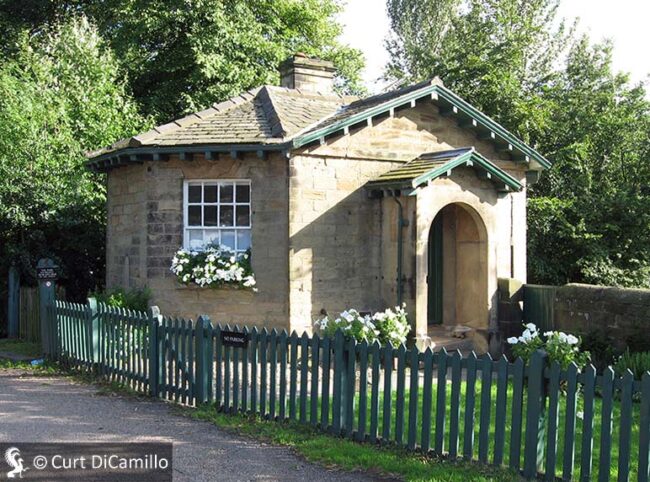
Octagon Lodge
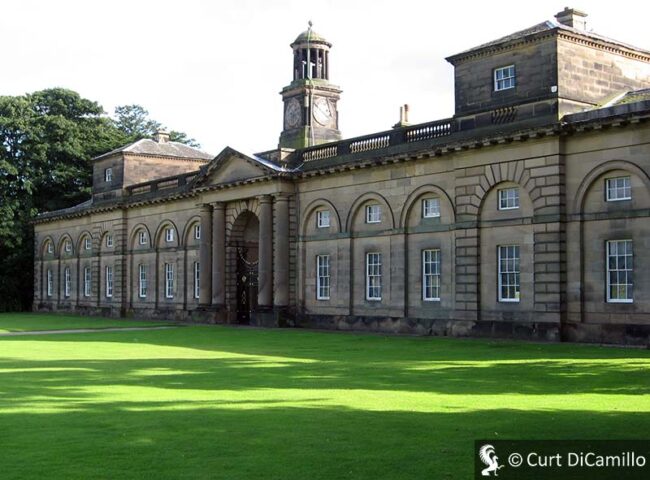
The stableblock in 2008
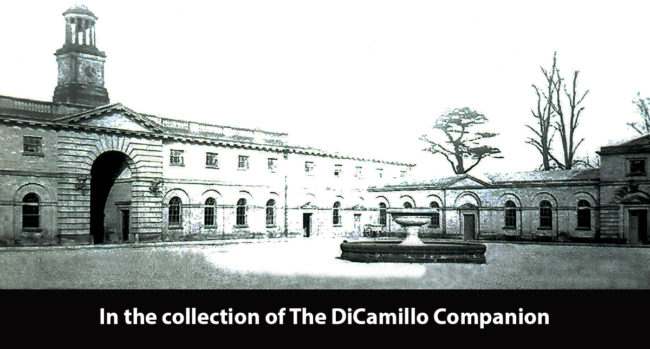
The stableblock from a circa 1900 postcard
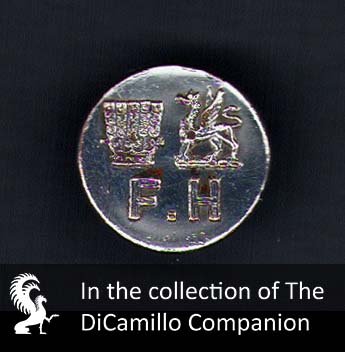
A 19th century silver-plated button from the Fitzwilliam Hunt (fox and hounds), which still meets today.
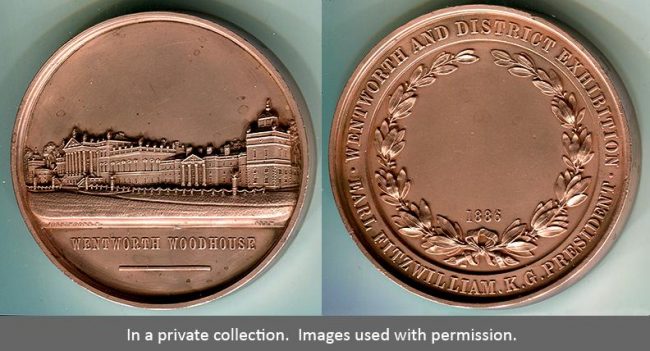
Bronze medal struck to commemorate the Wentworth and District Exhibition of 1886, of which the 6th Earl Fitzwilliam was president.
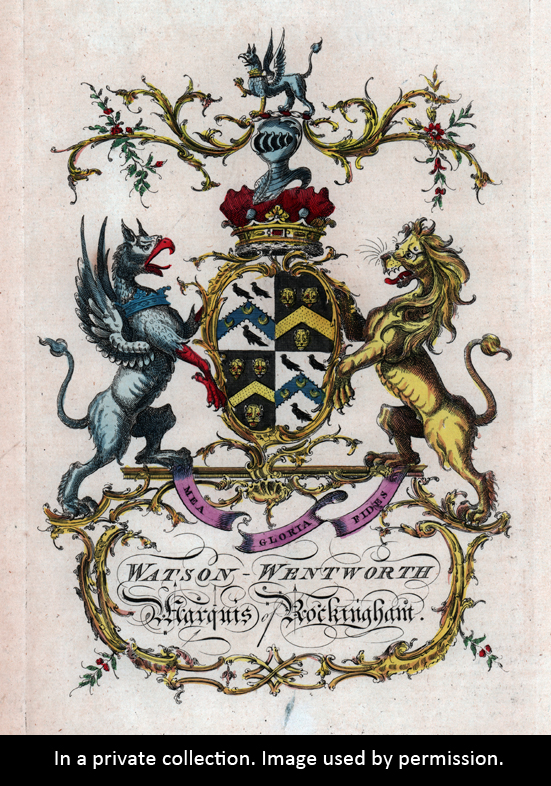
The coat of arms of Marquess of Rockingham from "The Complete English Peerage," 1805.
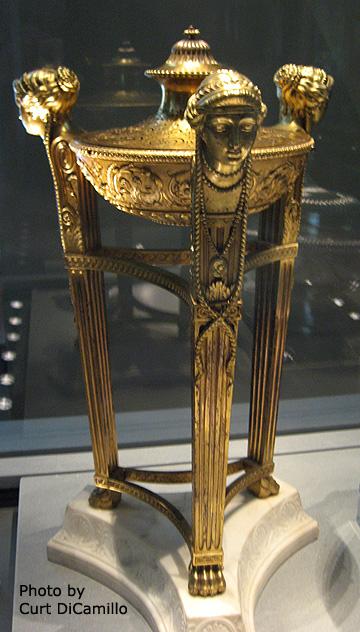
Athenian Stuart's ormolu perfume burner from WW; today in the collection of the V&A.
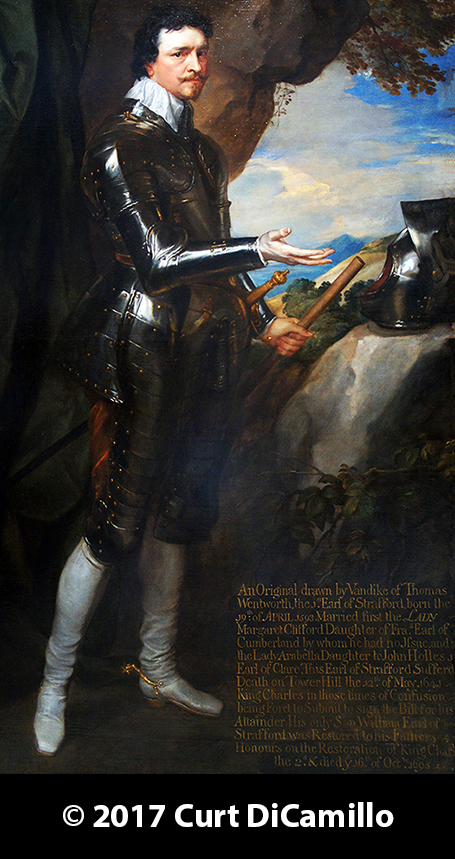
Thomas Wentworth, 1st Earl of Strafford, van Dyck, circa 1636. In the collection of Welbeck Abbey.
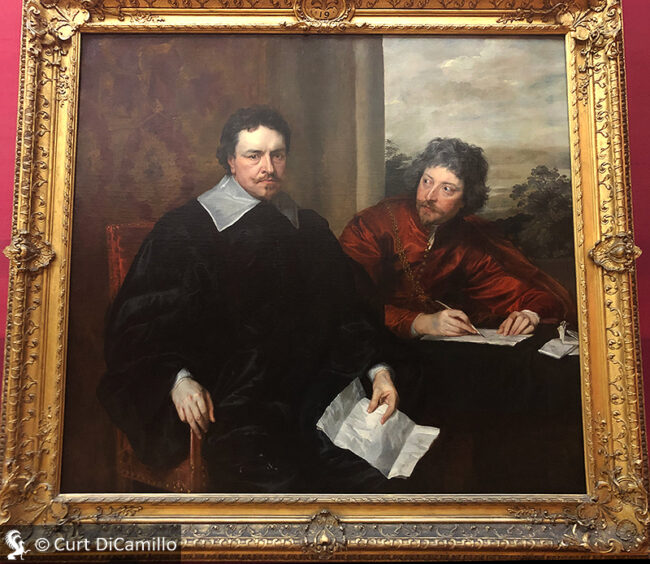
The 1st Earl of Strafford by van Dyck, circa 1639-40. In the collection of Lady Juliet Tadgell. On loan to the Fitzwilliam Museum, Cambridge.
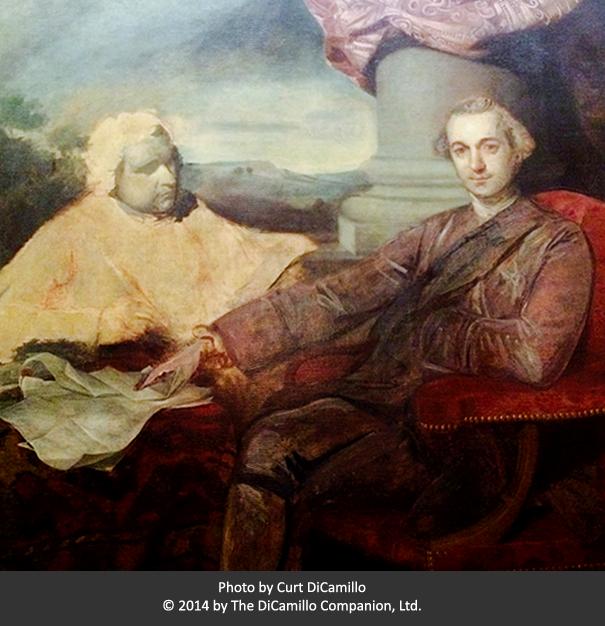
An unfinished oil by Reynolds of the 2nd Marquess of Rockingham and Edmund Burke, today in the collection of the Fitzwilliam Museum, Cambridge.
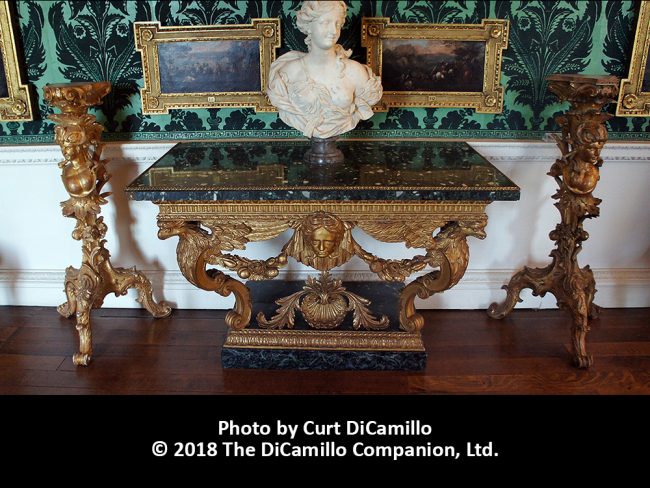
A console table made for Wentworth Woodhouse, today in the collection of Temple Newsam.
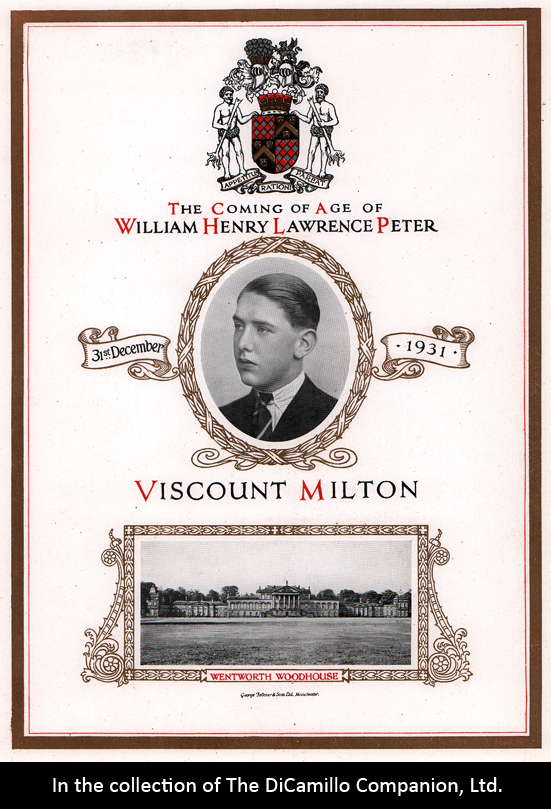
1931 program for the coming of age celebration of Viscount Milton
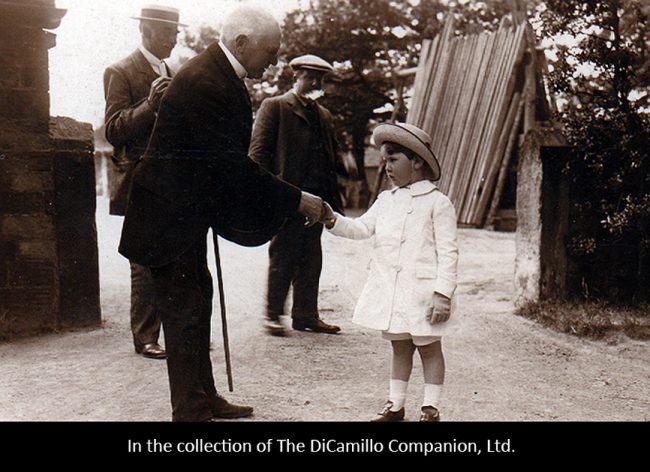
A Jun 21, 1915 photo of Viscount Milton shaking hands with a servant
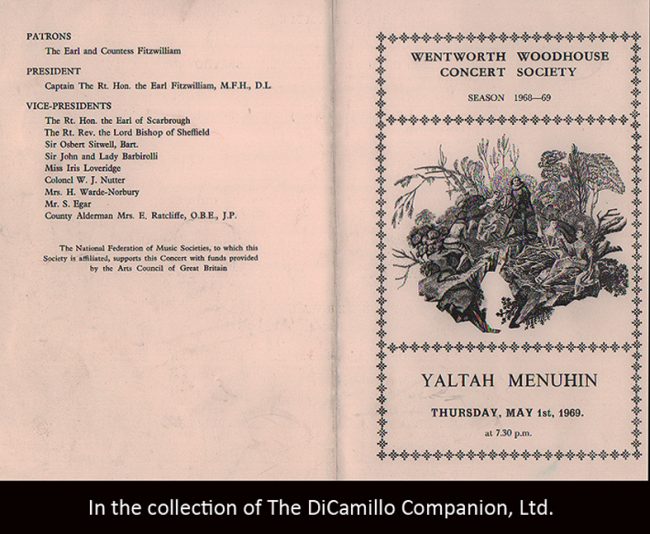
A May 1, 1969 program for the Wentworth Woodhouse Concert Society
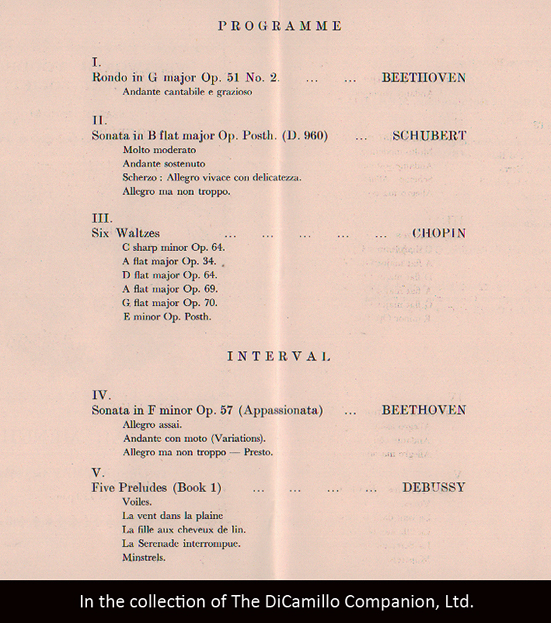
A May 1, 1969 program for the Wentworth Woodhouse Concert Society
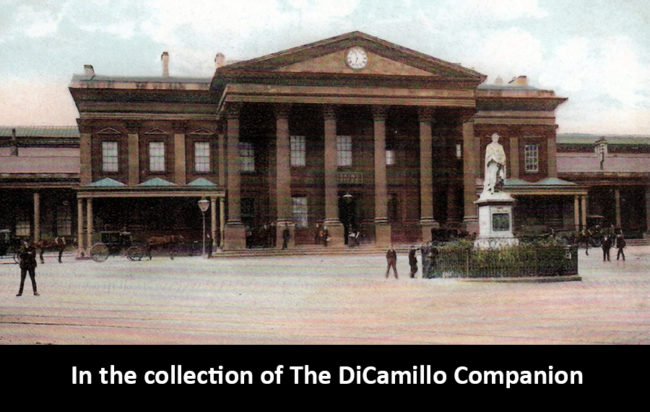
Huddersfield Railway Station, Yorkshire, from a circa 1902 postcard. This railway station was modeled on Wentworth Woodhouse.
Earlier Houses: There was a Jacobean house on the site, parts of which were incorporated into the current house.
House & Family History: The original Jacobean house on the site of today's house was the seat of Thomas Wentworth, 1st Earl of Strafford (see "Images" section), Charles I's famous and ill-fated advisor and henchman. In 1695, at the death of Thomas's son, the 2nd Earl, his estates were inherited by the Watson family of Rockingham Castle in Northamptonshire. This inheritance so upset the senior branch of the Wentworth family that they famously took to rebuilding their seat, nearby Wentworth Castle, in an attempt to outshine and outsize the upstarts at Wentworth Woodhouse (the folks at Wentworth Castle lost the building war when Wentworth Woodhouse's east façade stretched to 606 feet—the longest façade in Europe for a private house). It took a large chunk of the 18th century to complete the huge rebuilding of the Jacobean house, which was initiated by Lewis Watson, 1st Earl of Rockingham, who named his grand home Wentworth House. The 1st Earl was the eldest son of Edward Watson, 2nd Baron Rockingham, and his wife, the former Lady Anne Wentworth, daughter of Thomas Wentworth, 1st Earl of Strafford. The rebuilding was begun in the 1720s in the Baroque style (the smaller west façade retains its Baroque design) and was completed in the 1750s with the enormous Palladian east façade (tweakings and minor additions continued to be made to the house until the early 19th century). The result was astonishing: Wentworth Woodhouse contains 365 rooms, 1,000 windows, and five miles of underground passages. So long and confusing are the passageways that, in the 19th century, guests were given colored confetti to lay a trail so they could find the way back to their bedrooms. The last private owners, the Newbolds, called a section of the house "The Village" because it's so far to walk to. Wentworth Woodhouse cost the immense sum of £80,000 to complete, approximately £140 million in 2016 inflation-adjusted values using the labour value commodity index. During the mid-18th century Wentworth Woodhouse was a major political center and powerhouse of the Whig Party. During this time the house was the seat of Charles Watson-Wentworth, 2nd Marquess of Rockingham, twice prime minister (1765-66 and 1782) and one of the leading lights of the Whigs (British historian Paul Langford has claimed that the Rockingham administration "represented a landmark in constitutional history"). Charles Watson-Wentworth was created 1st Earl of Malton in the peerage of Ireland in September 1750, succeeded his father as 2nd Marquess of Rockingham in December of the same year, became lord lieutenant of the North and East Ridings of Yorkshire and a lord of the bedchamber in 1751, and, in 1760, was made a knight of the Garter. It was during the time of this learned and popular man that Wentworth Woodhouse possibly shone brightest. With no sons, at the death of the 2nd Marquess in 1782, his estates, but not his marquessate, passed to his nephew, William Fitzwilliam, 4th Earl Fitzwilliam, whose descendants remained seated at Wentworth Woodhouse until 1946. The Fitzwilliam family, who lived in incredible splendor at Wentworth Woodhouse, is believed to have been the inspiration for the Darcy family and Pemberley in "Pride and Prejudice." The enormous house was filled with great treasures: one magnificent room after another overflowed with art, capped off by the amazing two-story great hall, inspired by Inigo Jones's Queen's House in Greenwich: yellow scagliola columns ring the room, which measures 60 by 60 feet with a 40-foot ceiling and an inlaid floor of colored marble. In 1891 the Prince of Wales, later King Edward VII, famously visited Wentworth Woodhouse as part of the opening celebrations of a new public park in Rotterham on June 25, 1891. The 2008 book by Catherine Bailey, "Black Diamonds: The Rise and Fall of an English Dynasty," focused attention on Wentworth Woodhouse, particularly regarding the death of the 8th Earl in a 1948 plane crash enroute to the south of France. The earl was traveling with the woman he intended to marry—Kathleen "Kick" Kennedy (sister of JFK), who also died in the crash. In 1949 the family left the house after the death of the 8th Earl, selling much of the contents in the process, though the remnants of the collection, now called The Fitzwilliam Collection and owned by The Trustees of the Rt. Hon. Olive, Countess Fitzwilliam's Chattels Settlement, went with the 8th Earl's daughter, Lady Juliet Wentworth-Fitzwilliam, to St. Osyth's Priory in Essex. Lady Juliet became Lady Juliet Tadgell after marrying architectural historian Dr. Christopher Tadgell and lives with her husband at Bourne Park, near Canterbury. After the family decamped the stables were leased in the 1960s to West Riding County Council for Lady Mabel College of Physical Education, a purpose which they served until the 1980s, when the college vacated. By 1974, the majority of the house itself was leased to Rotherham Borough Council, which sublet it to Sheffield Polytechnic. After the death of the 10th and last Earl in 1979, the house and 90 acres were sold (in 1989) to pharmaceuticals businessman Wensley Haydon-Baillie, who spent wildly and housed a collection of Spitfire airplanes and Rolls-Royce automobiles at Wentworth Woodhouse. In an effort to relive his heavy debt load, Mr. Haydon-Baillie sold many of the remaining contents of Wentworth Woodhouse, finally declaring bankruptcy in 1998, after which the house was taken over by Bank Julius Baer, who held the mortgage. In 1999 the bank sold Wentworth Woodhouse to architect/developer Clifford Newbold for £1.5 million. In 2012 the Newbold family unsuccessfully sued the Coal Authority for £100 million, claiming that the house's fabric had been devastated by mining subsidence. Mr. Newbold and his sons spent £5 million on repairs to the house, which served as their family home until March 2017, when it was sold to the Wentworth Woodhouse Preservation Trust for £7 million. The trust plans to open the state rooms to the public, which will be supported by the National Trust for the first five years. The £7 million for the acquisition included a £3.5 million grant from the National Heritage Memorial Fund and grants from the Monument Trust, the Art Fund, Historic England, Sir Siegmund Warburg's Voluntary Settlement, and the John Paul Getty Jr. Charitable Trust (a government grant of £7.6 million covered essential roof repair). The long term strategy is for the public to visit and enjoy the most interesting parts of the property, while restoring the others for revenue-earning uses, such as retail and event spaces, holiday lets, and rental office space in the stables. Extensive repairs will be phased over 10-to-15 years, allowing time for funds to be raised and work to be carried out in phases while the property is open to the public. On July 22, 2016 the "Rotherham Advertiser" announced that the Wentworth Woodhouse Preservation Trust revised the projected cost of its restoration and redevelopment of the historic house from £42.8 million to £50.2 million, though later estimates have set the final cost at £130 million. The Huddersfield Railway Station in West Yorkshire (see "Images" section) is modeled after Wentworth Woodhouse. Listed by Simon Jenkins in his book, "Britain's 100 Best Railway Stations," the 1846-50 building was designed by James Pigott Pritchett in emulation of the great house at the insistence of the powerful 5th Earl Fitzwilliam. Wentworth Woodhouse is believed to have been one of the inspirations for the Darcy family and Pemberley in “Pride and Prejudice.”
Collections: Wentworth Woodhouse was the repository of one of Britain's great private art collections and included works by van Dyck, Reynolds, Mytens, Hoppner, Lawrence, Lorraine, and a major collection of Stubbs's work. The collection was begun in the 1630s by Thomas Wentworth, 1st Earl of Strafford, and continued by his descendants, most notably the 2nd Marquess of Rockingham, who greatly enriched the collection. The 2nd Marquess was a fellow of the Society of Antiquaries and the Royal Society, as well as a Whig prime minister. Among his acquisitions were 36 silver and copper medals and four "vase candlesticks," which he purchased between 1762 and 1763 from James "Athenian" Stuart. An ormolu tripod perfume burner, designed by Stuart circa 1760 for Wentworth Woodhouse (made in London by Diederich Nicolaus Anderson), is today in the collection of the Victoria & Albert Museum (see photo in "Images" section). Stuart also designed some interiors at Wentworth Woodhouse. In 1765 Lord Rockingham paid Stuart a further £75 (approximately £128,000 in 2016 inflation-adjusted values using the labour value commodity index) for a bronze lamp and an antique marble of Silenus riding a goat, both of which were shipped from Rome to Wentworth Woodhouse. When the 2nd Marquess died without children the house and its great collection passed to his nephew, the 4th Earl Fitzwilliam (the Fitzwilliam Museum in Cambridge was begun by a distant relative). The earls Fitzwilliam added to the collection and maintained some of it at Wentworth Woodhouse until the death in 1979 of the 10th Earl Fitzwilliam. Upon his death part of the collection, including the Stubbses, was inherited by his daughter, Lady Juliet Wentworth-Fitzwilliam, who moved the collection, today owned by a family trust (The Trustees of the Rt. Hon. Olive, Countess Fitzwilliam's Chattels Settlement) to St. Osyth's Priory, Essex. In 1999, two years after the death of Lady Juliet's second husband, Conservative MP Somerset de Chair, she sold St. Osyth's Priory and married architectural historian Dr. Christopher Tadgell. The Fitzwilliam Collection then moved to Bourne Park in Kent, where Lady Juliet, an ambitious collector, continues to add to it. Probably the most famous painting in the collection was the 2nd Marquess's life-sized painting of his championship racehorse, "Whistlejacket." Painted by George Stubbs circa 1762, the painting was purchased in 1997 for £11 million by The National Gallery, London (see photo in "Images" section). Wentworth Woodhouse also contained a large collection of antique and modern sculpture, including Nollekens's statue of a Greek goddess, which was sold to the Getty Museum. Much of contents of the house were sold in 1948 and 1949, after the death of the 8th Earl, though subsequent auctions have followed (Sotheby's held a five-day sale of the library in 1948: March 1 and 2 and April 26, 27 and 28). A late Renaissance ewer and basin was sold at Christie's on July 7, 1982, for £118,800. On July 15, 1986, Christie's sold Joseph Nollekens's "Diana" (1778) to the Victoria & Albert Museum. A group of four statues making up "The Judgment of Paris" was sold to the Getty Museum in May of 1987 for a total of £1.35 million. A pair of George II white side tables was sold at Christie's on November 17, 1988, for £330,000; at the same sale a pair of George II white console tables sold for £187,000. R.J. Wyatt's "Huntress with Leveret and Greyhound" was also sold, fetching £91,800. David Willaume I's rosewater ewer and sideboard dish of 1726, with arms of Lord Rockingham, was sold at Christie's on November 27, 1991. Also in 1991 Vincenzo Foggini's "Samson and Two Philistines" of 1749 was purchased by the Victoria & Albert Museum for £350,000. On July 8, 1998, Christie's sold a further consignment of goods (for a total of £15 million) from Wentworth Woodhouse, including "Bay Malton with John Singleton Up" by George Stubbs for £3,026,000; a portrait of Thomas Wriothesley, 4th Earl of Southampton, by Sir Peter Lely, for £25,300; "The Infant Hercules" by Sir Joshua Reynolds for £199,500; "A Wedding Feast at an Inn" by Adriaen Jansz van Ostade for £221,500; a 1766 silver-gilt version of the Richmond Cup, designed by Robert Adam, for £122,500; another silver-gilt Richmond Racing Cup, this one of 1769, also designed by Adam, sold for £95,000; a silver wine cistern by David Willaume, commissioned by Thomas Watson-Wentworth, 1st Marquess of Rockingham, sold for £1.4 million; one of a pair, formerly at Bothwell House, Lanarkshire, of George III ormolu and blue john two-light candelabrum by Matthew Boulton for £51,000; a suite of giltwood Rococo seat furniture by Gillows made for the Whistlejacket Room; and a collection of early English printed books, including five printed by Caxton from the 2nd Marquess of Rockingham's library, and a first edition of "The Canterbury Tales," printed in 1477, which sold for £4,621,500; a very fine George II chinoiserie mahogany and fretwork secretaire-cabinet, known as the Marchioness of Rockingham's Cabinet, sold for £507,500, against a high estimate of £300,000; van Dyck's celebrated portrait of Lady Lucy Percy, Countess of Carlisle, was withdrawn from the sale. In 2002 Stubbs's "The Marquess of Rockingham's Arabian Stallion" was offered in lieu of inheritance tax and subsequently entered the collection of the National Gallery of Scotland. A fine Gillows sofa from the Whistlejacket Room at Wentworth Woodhouse, mostly recently in the collection of the Preservation Society of Newport County at The Elms in Newport, Rhode Island, was sold by the Preservation Society into private hands at auction in 2003 (the sofa returned to England). In 2006 an exhibition of paintings from Wentworth Woodhouse entitled "Masterpieces from an English Country House: The Fitzwilliam Collection" toured two museums in the United States: The Chrysler Museum of Art in Norfolk, Virginia, and the Memphis Brooks Museum in Memphis, Tennessee. An unfinished oil by Reynolds of the 2nd Marquess of Rockingham and Edmund Burke, today in the collection of the Fitzwilliam Museum, Cambridge (see photo in "Images" section), was probably intended for the collection at Wentworth Woodhouse.
Comments: Wentworth Woodhouse is considered one of the finest Georgian houses in Britain. Pevsner wrote that the interiors are "quite exceptional." Michael Hall, writing in "The English Country House from the Archives of Country Life, 1897-1939," states that Wentworth Woodhouse is "One of the wonders of English architecture." Writing of the great hall in 1768, Arthur Young leaves us with this description: "Beyond all comparison, the finest room in England." It's been suggested that Lovey, Mrs. Thurston Howell III, née Eunice Wentworth, famous to viewers of "Gilligan's Island," is descended from Thomas Wentworth, 1st Earl of Strafford.
Garden & Outbuildings: Open-cast mining, which did great damage to the historic landscape, began in the park in 1946 after the nationalization of the coal industry; this was happily reversed in the late 20th and early 21st centuries, when the Fitzwilliam Wentworth Amenity Trust began a program of restoration. The stables, by Carr of York, served as the headquarters of car manufacturer Sheffield-Simplex between 1905 and 1920 (the 7th Earl Fitzwilliam was one of the financial backers of the company); in the 1960s, 70s, and 80s the stables were home to Lady Mabel College, a teacher training college. Until 2018 the stables were used as a training center for prison guard dogs. The park, which contains a large collection of monuments and follies, and the village, are under the care of the Amenity Trust, which is associated with the Fitzwilliam family. One of the highlights of the park is the Rockingham Monument (see "Images" section), erected in 1788 by the 4th Earl Fitzwilliam in memory of his uncle, Charles, 2nd Marquess of Rockingham (the monument is often mistakenly referred to as a mausoleum; this is incorrect, as it does not contain the remains of a body). The earl's architect for the project was John Carr, who designed a three-story building of 90 feet comprised of a Doric base, an Ionic second story, and a cupola on the third level. The Doric base provides entry to a circular room supported by eight fluted columns with a decorated dome above. The room has niches that contain busts of friends and political allies of the marquess: Frederic Montagu, the Duke of Portland, Edmund Burke, Sir George Saville, Charles James Fox, Lord John Cavendish, John Lee, and Admiral Keppel. In the center is a life-sized marble statue of the marquess by Joseph Nollekens, carved for the enormous sum of £3,000 (equivalent to approximately £347,000 in 2016 values using the real price commodity index). The pedestal supporting the statue contains tributes to Rockingham's memory, most notably by Edmund Burke (once Rockingham's secretary and later a noted MP and orator). The Ionic second story contains an open arch on each side that allows a view of the faux sarcophagus, which sits in the center. The third story is a cupola supported by 12 Doric columns. An iron railing encloses the base with four 50-foot-tall obelisks at each corner crowned with urns. The monument is open to the public on a limited basis. In 1746 Henry Flitcroft designed for Thomas Watson-Wentworth, Earl of Malton and lord lieutenant of the West Riding of Yorkshire, Hoober Stand, a 98-foot-tall tower with a viewing platform to commemorate the Scottish Jacobite defeat of 1746 at Culloden Moor (see "Images" section). During the Jacobite uprising of 1745 Watson-Wentworth successfully fought with the government forces, and, when the Jacobites were defeated, King George II elevated him to the marquessate of Rockingham for his contribution. To show his gratitude for his elevation in the peerage, Watson-Wentworth ordered the construction of Hoober Stand and dedicated it to George II. The tower was completed in 1748 at a cost of £3,000 (approximately £5 million in 2016 inflation-adjusted values labour value commodity index) and was a forerunner of Flitcroft's more famous Alfred's Tower at Stourhead (1762-72). In 1768 Arthur Young uttered the now-famous quote about the view from the top of Hoober Stand: "This view is perhaps the most beautiful in Yorkshire; for the house, park, and woods form a circular connected landscape, more elegantly beautiful than the brightest paintings of Zuccarelli, and more noble than the grandest of Poussin's ideas; while the surrounding country exhibits Arcadian scenes smiling with cultivation, and endless in variety." In 2021 it was announced that the ruinous camellia house, once home to some of the earliest and rarest Asian camellias imported into Britain, is to be restored as a tea room and event space.
Chapel & Church: The hall passage on the ground floor that leads to the chapel has paneling on its walls from Sutton Scarsdale Hall.
Architect: Ralph Tunnicliffe
Date: 1730sArchitect: James Pigott Pritchett
Date: 19th centuryArchitect: James Stuart
Date: Circa 1755Architect: Henry Flitcroft
Date: 1730s-50sArchitect: John Carr
Date: 1766-1804Architect: Unknown (designed by an unknown architect)
Date: 1725-28Vitruvius Britannicus: C. IVth. pls. 79-81, 1739.
John Bernard (J.B.) Burke, published under the title of A Visitation of the Seats and Arms of the Noblemen and Gentlemen of Great Britain and Ireland, among other titles: 2.S. Vol. I, p. 109, 1854.
John Preston (J.P.) Neale, published under the title of Views of the Seats of Noblemen and Gentlemen in England, Wales, Scotland, and Ireland, among other titles: Vol. V, 1822.
Country Life: XIX, 450, 1906. LVI, 436, 476, 512, 554, 1924. LXXVI, 248, 1934. XCIX, 854, 1946. CLXXIII, 624 plan, 708 plan, 1983.
Title: John Carr of York: Collected Essays
Author: Hall, Ivan; Powell, Kenneth (Editor)
Year Published: 2023
Reference: pg. 148
Publisher: Winchester: Carriana Publishing
ISBN: 9781399959155
Book Type: Hardback
Title: Times, The (London newspaper)
Author: NA
Year Published: NA
Reference: Nov 1, 2014 article by Francesca Steele and Anne Ashworth
Publisher: London: Times Newspapers Ltd.
ISBN: NA
Book Type: Newspaper
Title: Stourhead Landscape, The - 1999
Author: Woodbridge, Kenneth
Year Published: 1999
Reference: pg. 60
Publisher: London: The National Trust
ISBN: NA
Book Type: Softback
Title: Christie's Auction Catalog: Wentworth Woodhouse, Jul 8, 1998
Author: NA
Year Published: 1998
Reference: pgs. 28, 68, 80, 86, 102, 104, 118, 144, 162, 166
Publisher: London: Christie's
ISBN: NA
Book Type: Softback
Title: Wentworth Castle: A Short History
Author: Hey, David
Year Published: 1991
Reference: pg. 10
Publisher: Derby: English Life Publications
ISBN: 0851011896
Book Type: Light Softback
Title: Georgian: The Magazine of the Georgian Group, The
Author: NA
Year Published: NA
Reference: Jan 2002, pg. 13. Jan 1999, pgs. 2-3
Publisher: London: The Georgian Group
ISBN: NA
Book Type: Magazine
Title: Art Newspaper, The
Author: NA
Year Published: NA
Reference: Jul-Aug 1998, pg. 3; Jun 2006, pg. 13
Publisher: London: Umberto Allemandi & Co.
ISBN: NA
Book Type: Newspaper
Title: Athenian Stuart: Pioneer of the Greek Revival
Author: Watkin, David
Year Published: 1982
Reference: pgs. 32, 35, 61
Publisher: London: George Allen and Unwin
ISBN: 0047200278
Book Type: Softback
Title: Creating Paradise: The Building of the English Country House, 1660-1880
Author: Wilson, Richard; Mackley, Alan
Year Published: 2000
Reference: pg. 243
Publisher: London: Hambledon and London
ISBN: 1852852526
Book Type: Hardback
Title: Biographical Dictionary of British Architects, 1600-1840, A - HARDBACK
Author: Colvin, Howard
Year Published: 2008
Reference: pgs. 225, 381-382, 835, 1001, 1061
Publisher: New Haven: Yale University Press
ISBN: 9780300125085
Book Type: Hardback
Title: English Country House From the Archives of Country Life, 1897-1939, The
Author: Hall, Michael
Year Published: 1994
Reference: pg. 104
Publisher: London: Mitchell Beazley
ISBN: 1857325303
Book Type: Hardback
Title: Disintegration of a Heritage: Country Houses and their Collections, 1979-1992, The
Author: Sayer, Michael
Year Published: 1993
Reference: pgs. 41-42, 78-79, 128, 153-154
Publisher: Norfolk: Michael Russell (Publishing)
ISBN: 0859551970
Book Type: Hardback
House Listed: Grade I
Park Listed: Grade II*
Past Seat / Home of: Thomas Wentworth, 1st Earl of Strafford (first creation), until 1641; William Wentworth, 2nd Earl of Strafford, 1641-95. Thomas Watson-Wentworth, 1695-1723; Thomas Watson-Wentworth, 1st Marquess of Rockingham, 1723-50; Charles Watson-Wentworth, 2nd Marquess of Rockingham, 1750-82. William Wentworth-Fitzwilliam, 4th Earl Fitzwilliam, 1782-1833; Charles William Wentworth-Fitzwilliam, 5th Earl Fitzwilliam, 1833-57; William Thomas Spencer Wentworth-FitzWilliam, 6th Earl FitzWilliam, 1857-1902; William Charles de Meuron Wentworth-Fitzwilliam, 7th Earl Fitzwilliam, 1902-43; William Henry Lawrence Peter Wentworth-Fitzwilliam, 8th Earl Fitzwilliam, 1943-48. Wensley Haydon-Baillie, late 20th century. Clifford Newbold, 1999-2015.
Current Ownership Type: Preservation Organization
Primary Current Ownership Use: Mixed Use
Ownership Details: Since 2017 owned by Wentworth Woodhouse Preservation Trust, who plan to restore the house as a mixed-use development.
House Open to Public: By Appointment
Phone: 01226-351-161
Email: [email protected]
Website: https://wentworthwoodhouse.org.uk/
Historic Houses Member: Yes